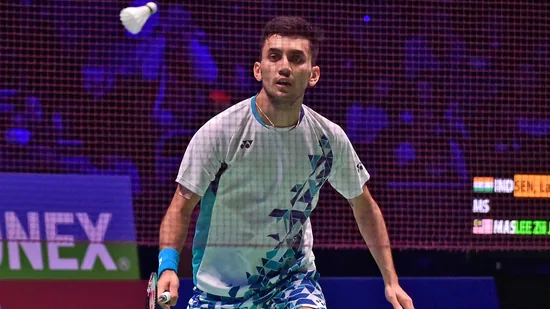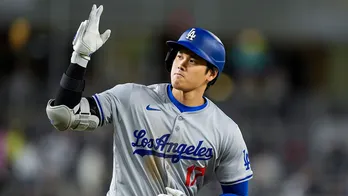Lakshya Sen, re-set and ready to go
When Lakshya Sen steps on to the court at the Asian Badminton Championships in Manila starting on Tuesday, his first tournament after three weeks, the focus will no doubt be on his results. But inside the many people that now make up Team Lakshya there will be careful scrutiny and accounting of other things—movement, power, endurance. Because this individual Asian Championship—the first to be held after a two-year break due to Covid—is the start of a five-month campaign, the most intense of Lakshya’s career so far. Between now and the last week of September, Lakshya has 72 tournament days and 55 training days to tick off. They are all logged in with fingers crossed on a sheet of paper.  PREMIUM
PREMIUM
At the Prakash Padukone Badminton Academy (PPBA), Vimal Kumar, former national champion and Asian Games medallist, and currently PPBA chief coach—and co-founder—knows the schedule “is a little tough on the body”. That is why the weeks after Lakshya’s round of 16 exit at the Korean Open last month, they have focussed on Lakshya’s super-structure. On putting into place, to use another metaphor, his first line of on-court defence—physical energy, intensity, lung power—which is about to be put through the wringer.
Lakshya is now India’s No 1 men’s singles player, ranked in the world’s top 10 and object of the most attention across Indian racquet sport. Between now and September 25, he will compete in the Thomas Cup, Commonwealth Games, Asian Games and world championships. Plus, other heavy-duty events like the Super 1000s and the 750s like the Indonesia Open, Malaysian Open and Japan Open and this week’s prestigious Asian Championships. “The priority for the last three weeks has been working on his strength, not full-on court work,” Vimal says. “So, at times when you are expected to win there may be some bad results and that you need to take in your stride.”
Lakshya has been working with Vimal—coach, mentor, guide since he was 8. His career has now cranked into high gear. That means minimum time, maximum urgency. Vimal says ruefully, “No player gets time to give full attention to everything. They just don’t.” Mostly they must manage, and the 55 training days in Bengaluru, Dubai and Malaysia are meant to work as buffer zones, help Lakshya step off court, reboot and push on through the five months. “Lakshya is at a stage where he also needs to play the tournaments, he also needs ranking points, he also needs to maintain certain things, and it is a bit of a combination and balance.”
Compared to the dramas of end 2021, surely this should be a breeze? Ejected from the Sudirman and Thomas Cup teams following defeat in the trials to a player ranked 1414 in the world, Lakshya’s riposte was emphatic, pointed. He produced a string of breakthrough performances—semi-finalist at the World Championships, finalist at the All England Championships, and has, by age 20, docked victories over everyone he has run into from among the world’s top 10—No 1 Viktor Axelsen, No 3 Anton Antonsen, No 5 Anthony Ginting, No 7 Lee Zii Jia and No 8 Jonatan Christie.
Within months, Lakshya went from being a promising young player (ranked No 25 last October) in the shadow of the redoubtable Kidambi Srikanth to a shining specimen under elite sport’s electron microscope. Now, along with a crushing workload, comes more expectation and public interest. The 72 tournament days will involve prioritising the most important events and using the rest around them to stay sharp, try a few new things—and ignore social meltdown if the results are not so hot. Lakshya now works with a new Korean coach Yoo Yong-sun and physical trainer Amit Vengurlekar. The plan is to get a sparring partner from Indonesia from the middle of May.
We may look at Lakshya as an athlete coming into his own, sharpening his game, his career on the up. Someone familiar with the superstructure, his former strength and conditioning (s&c) coach Deckline Leitao, wants us to switch perspective and see what lies behind the mind behind the game. “Remember, Lakshya’s body has already gone through 10 years of rigorous jumping, running in a physically dominant sport; from age 10. It’s an inseparable part of sport, we can’t not do it.” It’s why the backroom stuff, workload management, strength work is fundamental to his future. No matter how strong pro athletes appear when they are on the go, their s&c guys treat them like they are made of glass.
Elite athletes are often told sport can be unfair: that they may play their best game and still lose, play average and still win. But there’s one factor Lakshya knows has zero ambiguity. Leitao says, “Whether you play well or badly, the one thing that will ensure you will 100% lose is if your body is gone. If your body is broke, you are out of the game.”
Leitao and Lakshya worked from August 2019 to end 2021 until the world championships. Every few months after Lakshya returned from competition, whatever his mood was, up or down, the body had a separate story to tell about wear and tear. There would be visits to orthopaedics to check what parts of the system had gone off their baseline requirement. Not an emergency call, just basic common sense which helped in the past rework Lakshya’s shoulder and back into, as Vimal calls it, the “combination and balance” of power and resilience. Before heading out into the competitive world again. It is where Lakshya stands today, tightly wound, finely tuned and ready to play—and beat up that body again.
Badminton happens to be the sport that makes professionals like Leitao wince. “It’s got such crazy movements”—start, stop, start, sideways, forwards, backwards, up, down, lunge. “The badminton lunge is followed by a deep arch of the back like a tennis serve, then you’ll be in the air like a volleyball player smashing, and then diving like a kabaddi raider. A short break and then again and again the impact on the knees, ankle, shoulder, back…” Ouch.
Both Vimal and Leitao have spoken of Lakshya as self-aware, sharp and quick to learn. Someone who will not, Leitao says, “do unnecessary training.” Famous for his dramatic lunge-dives and retrieves on the court, it’s not something often seen in Lakshya’s general practice. He returned from a stint with Axelsen in Dubai—there may be more between them in the 55 days of training—and rejigged his own drills going from what he observed.
Over the last five months, Lakshya withstood the challenges the game threw at him and held his body together in giving the badminton public thrilling results. And the sight of that rare but instantly recognisable athletic quality—the timing of performance. Of knowing when to shine. Over the next five months, those opportunities will arise again; and while that’s on, we will also learn if his body is ready to take its next, and so far biggest, leap.
Experience unrestricted digital access with HT Premium
Explore amazing offers on HT + Economist Start 14 Days Free Trial Already Subscribed? Sign In
Disclaimer: The copyright of this article belongs to the original author. Reposting this article is solely for the purpose of information dissemination and does not constitute any investment advice. If there is any infringement, please contact us immediately. We will make corrections or deletions as necessary. Thank you.







